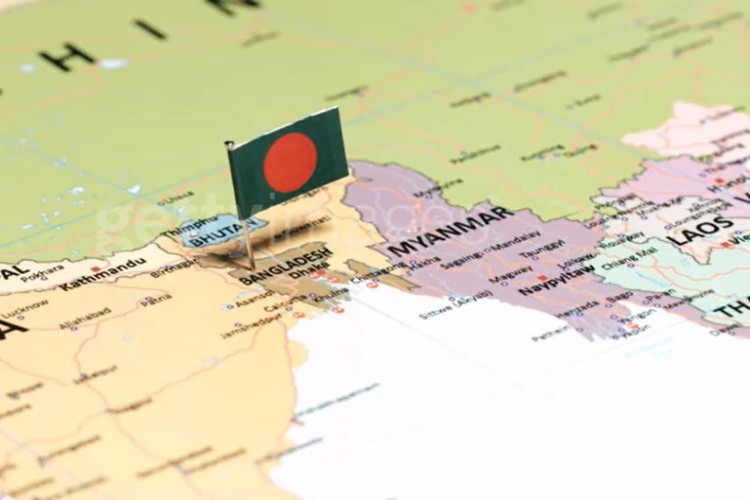India-Bangladesh trade ties: India’s trade relations with Bangladesh — historically stable and growing — are now facing their sharpest downturn in years. The latest flashpoint emerged after Bangladesh’s interim leader Muhammad Yunus made a controversial remark in China, describing India’s Northeast as “landlocked.” The comment, seemingly minor in isolation, set off a chain of retaliatory measures that now threaten to recalibrate the regional trade architecture.
The geopolitical backdrop is as critical as the economic one. Bangladesh is set to graduate from the United Nations’ Least Developed Country (LDC) category in November 2026, which will end its duty-free access to major export markets such as the European Union. This looming deadline has triggered a strategic pivot in Dhaka—from traditional reliance on New Delhi to deeper ties with Beijing. China, which already provides 97% duty-free access to Bangladeshi goods, has rapidly expanded its economic footprint in the country, securing infrastructure, defence, and manufacturing partnerships.
READ | The gig economy is booming—but hardly any protection for workers
China’s expanding footprint in Bangladesh
This strategic realignment is straining trade ties with India. The most recent move by New Delhi was to impose significant import restrictions on Bangladeshi goods—especially ready-made garments (RMG), Bangladesh’s largest export and a vital source of foreign exchange. Starting May 17, India restricted seven categories of Bangladeshi goods, including RMG, fruits, and processed foods, from entering through its land borders, rerouting them exclusively to the seaports of Kolkata and Nhava Sheva. The impact is immediate: over 93% of Bangladesh’s $563 million worth of RMG exports to India in FY2024-25 had previously moved via land routes.
The standoff began in early April, when India abruptly terminated a five-year-old transhipment facility that had allowed Bangladesh to export cargo via Indian land routes and airports to Europe, the Middle East, and beyond. The decision was a major logistical blow to Dhaka and symbolised New Delhi’s growing frustration.
India’s strategic textile retaliation
On paper, the Indian government attributed these measures to port congestion and a lack of reciprocity. Government officials have flagged Bangladesh’s recent move to restrict yarn imports from India via land ports—despite land-based trade being the most efficient and cost-effective mode for Bangladeshi textile mills—as a key irritant. Yarn exports to Bangladesh accounted for over 20% of India’s $11.38 billion exports to its eastern neighbour in FY2025, and cotton yarn alone brought in $2.39 billion. Now, the decision to allow Indian yarn only via seaports threatens to disrupt supply chains essential to Bangladesh’s RMG sector.
At the same time, Indian policymakers are signalling that Dhaka cannot “cherry-pick” trade terms. “India is willing to engage in discussion, but it is Bangladesh’s responsibility to create an environment free of rancour,” a government official told the press. Indian textile firms, supported by think tanks like the Global Trade Research Initiative (GTRI), have long voiced concerns over the uneven playing field. While they pay GST on domestic fabric, Bangladeshi firms import Chinese fabric duty-free and receive export incentives, giving them an estimated 10–15% price advantage in India. Indian manufacturers argue this system not only hurts domestic production but also distorts regional trade flows.
Now, with India securing duty-free access for its own textile exports in its free trade deals with the UK and seeking similar terms with the EU and US, policymakers in New Delhi see an opportunity to reposition India as a textile export powerhouse. Restricting Bangladeshi garments, therefore, serves both strategic and economic ends—by protecting local industry and attracting labour-intensive jobs to Indian manufacturing hubs like Tiruppur.
Yet the economic pain on both sides is real. Bangladeshi industry bodies such as the BGMEA have warned of severe disruptions, citing longer shipping times, higher costs, and the potential loss of market share in India. The PRAN-RFL Group, a leading processed food exporter, which sends two-thirds of its $50 million shipments to India’s Northeast, is already facing delays and revenue losses. These regions, historically dependent on Bangladeshi goods, may now need to scale up domestic production—a move New Delhi has quietly encouraged.
Veena Sikri, former Indian High Commissioner to Bangladesh, noted that northeastern states can use this moment to develop local industries in sectors like wooden furniture, carbonated drinks, and processed food—products previously dominated by Bangladeshi exporters.
India-Bangladesh trade ties and a fractured future for South Asia
However, the bigger story may be Dhaka’s accelerating tilt towards China. Nobel laureate Muhammad Yunus, now serving as interim chief, has publicly called for greater Chinese involvement in South Asia. His March 2025 visit to Beijing yielded $2.1 billion in new investments, including sensitive infrastructure projects such as the Teesta River development. China is now Bangladesh’s top military supplier and infrastructure partner, accounting for over 70% of the country’s major arms purchases between 2016 and 2020.
With the exit of Sheikh Hasina—long viewed as a pro-India ally—the strategic shift is increasingly visible. Bangladesh has imposed new curbs on Indian exports and is reportedly favouring imports from China, Turkey, and even Pakistan. Yet this realignment has not gone smoothly. According to GTRI’s Ajay Srivastava, efforts to replace Indian imports have left Dhaka’s garment industry in disarray, while Indian manufacturing centres have gained.
Despite the imbalance—Bangladesh imports over $9 billion worth of goods from India while exporting only $2 billion—the economic costs are rising for both nations. Indian importers are unwilling to absorb added logistics costs, and Bangladeshi exporters face declining competitiveness in a market they had cultivated over years.
The path ahead is uncertain. While New Delhi appears committed to a strategy of reciprocity and economic nationalism, the potential for long-term damage to regional trade remains high. As Bangladesh edges closer to LDC graduation, its survival will depend on stable, diversified trade partnerships. For India, the challenge is to balance atmanirbharata with pragmatic regional diplomacy.

